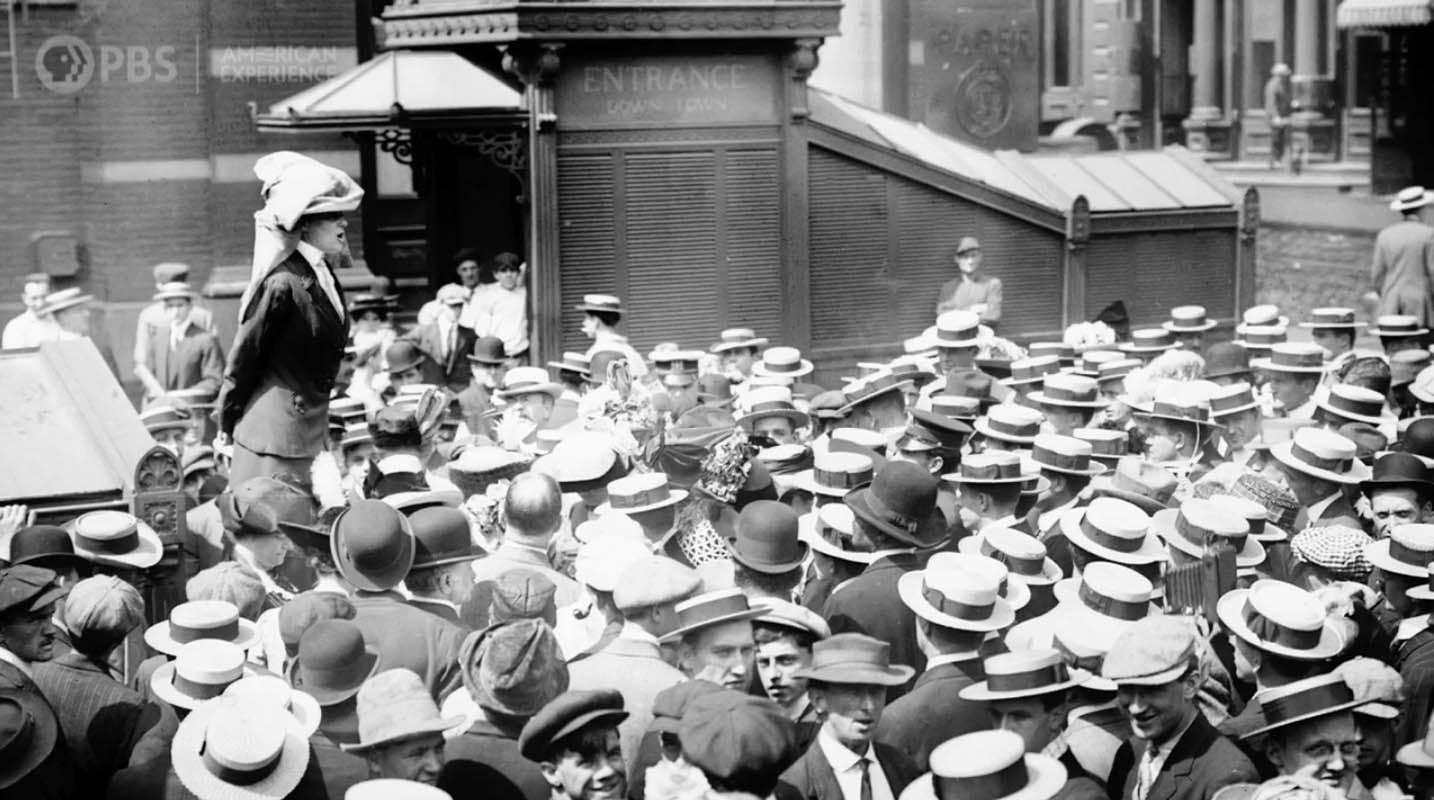The PBS new American Experience miniseries The Vote has just been released, telling the lesser known stories of the women’s suffrage movement, particularly in the last decade. You can catch the show on television or online, where both episodes in the series are available for streaming now. The Vote is narrated by Kate Burton and features the voices of Mae Whitman (Alice Paul), Audra McDonald (Ida B. Wells), Laura Linney (Carrie Chapman Catt) and Patricia Clarkson (Harriot Stanton Blatch) who portray the “unsung warriors of the movement,” PBS states. The series is written, directed and produced by Emmy Award-winner Michelle Ferrari and executive produced by Mark Samels and Susan Bellows. Today, we share an exclusive clip provided to Untapped New York featuring New York suffrage movement leader Harriot Stanton Blatch.
Blatch was the daughter of Suffragist leader Elizabeth Cady Stanton and abolitionist journalist and politician Henry B. Stanton. As such, she was imbued with a passion for reform from an early age. She founded the Equality League of Self-Supporting Women in 1907 (later the Women’s Political Union), recruiting working women to the Suffragist cause for the first time and connecting them to middle class professional women. The first large-scale event for the Equality League was a parade down Fifth Avenue. A large event inside Carnegie Hall had to turn away over a thousand potential guests. With a wider range of activists now involved, new, more confrontational methods of action were tested including picketing and going on strike. As Blatch told the New York World, the women had moved from the “chimney corner” to the “street corner” to plead their cause to the men, the voters of the country. Despite concerns from the early suffragist leaders on this new style of activism, and the attacks on the women the work of the League proved fruitful for the Suffrage movement.
The clip includes historic video and imagery, some truly stunning images of women in Victorian dress elevated and surrounded by a sea of men in bowler on the street. Keen observers will see one photograph taken from in front of Federal Hall on Wall Street, another in the pavilion in Union Square built for public demonstrations. The narrator explains how the women who stood up to speak were sometimes heckled or stoned with pebbles, but the actions increased the visibility of the movement and increased its base of support. A Men’s League for Women’s Suffrage was even created in support.
In the clip, we hear some of Blatch’s own words, like how the Equality League “was open to any women who earned their daily bread from a cook to a mining engineer, and we have both of them.” Blatch was not one of these, as a woman who never needed to earn her own living. She was aware of this distinction, and joked that she was the only parasite in the Equality League. Fundamentally, she believed that wage owning women were the key to winning the equality battle in the United States. One of her campaign workers later recalled, “Mrs. Blatch’s whole idea was that you must keep suffrage every minute before the public so that they are used to the idea and talk about it, whether they agree or disagree. I think she was quite right.”
Watch the new American Experience miniseries The Vote on PBS.






